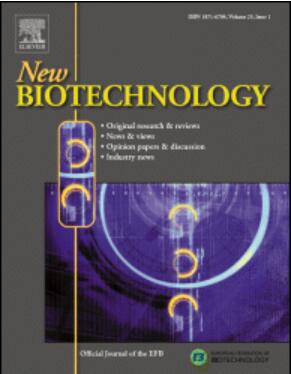Efficient surface display of single-chain variable fragments against tumor necrosis factor α on engineered probiotic Saccharomyces boulardii and its application in alleviating intestinal inflammation in vivo
IF 4.5
2区 生物学
Q1 BIOCHEMICAL RESEARCH METHODS
引用次数: 0
Abstract
Saccharomyces boulardii is a probiotic that can alleviate inflammation in the gut. In this study, a novel surface display system was developed by employing two different single-chain variable fragments (scFvs) against human tumor necrosis factor α as model anti-inflammatory proteins. We first optimized the expression levels of the scFvs by selecting strong constitutive promoters, of which expression cassettes were integrated into the S. boulardii chromosome using the CRISPR/Cas9-based genome editing system. As the signal peptide and anchoring motif are key factors affecting the display efficiency of target proteins, we next sought to find their optimal combination for the development of an efficient surface display system in S. boulardii. Among various combinations of signal peptide and anchoring motif, the engineered S. boulardii, which displayed scFvs using the SED1 signal peptide and DAN4 glycophosphatidylinositol domain (derived from Saccharomyces cerevisiae) as the signal peptide and anchoring motif, respectively, exhibited the highest display efficiency. Finally, the anti-inflammatory effects of the engineered S. boulardii strains displaying a high yield of scFvs, including a low disease activity index score, prevention of colon shortening, and reduction in pro-inflammatory cytokines, were validated using a colitis mouse model. Therefore, we believe that our approach has potential applications in the development of engineered S. boulardii displaying other valuable proteins.
求助全文
约1分钟内获得全文
求助全文
来源期刊

New biotechnology
生物-生化研究方法
CiteScore
11.40
自引率
1.90%
发文量
77
审稿时长
1 months
期刊介绍:
New Biotechnology is the official journal of the European Federation of Biotechnology (EFB) and is published bimonthly. It covers both the science of biotechnology and its surrounding political, business and financial milieu. The journal publishes peer-reviewed basic research papers, authoritative reviews, feature articles and opinions in all areas of biotechnology. It reflects the full diversity of current biotechnology science, particularly those advances in research and practice that open opportunities for exploitation of knowledge, commercially or otherwise, together with news, discussion and comment on broader issues of general interest and concern. The outlook is fully international.
The scope of the journal includes the research, industrial and commercial aspects of biotechnology, in areas such as: Healthcare and Pharmaceuticals; Food and Agriculture; Biofuels; Genetic Engineering and Molecular Biology; Genomics and Synthetic Biology; Nanotechnology; Environment and Biodiversity; Biocatalysis; Bioremediation; Process engineering.
 求助内容:
求助内容: 应助结果提醒方式:
应助结果提醒方式:


